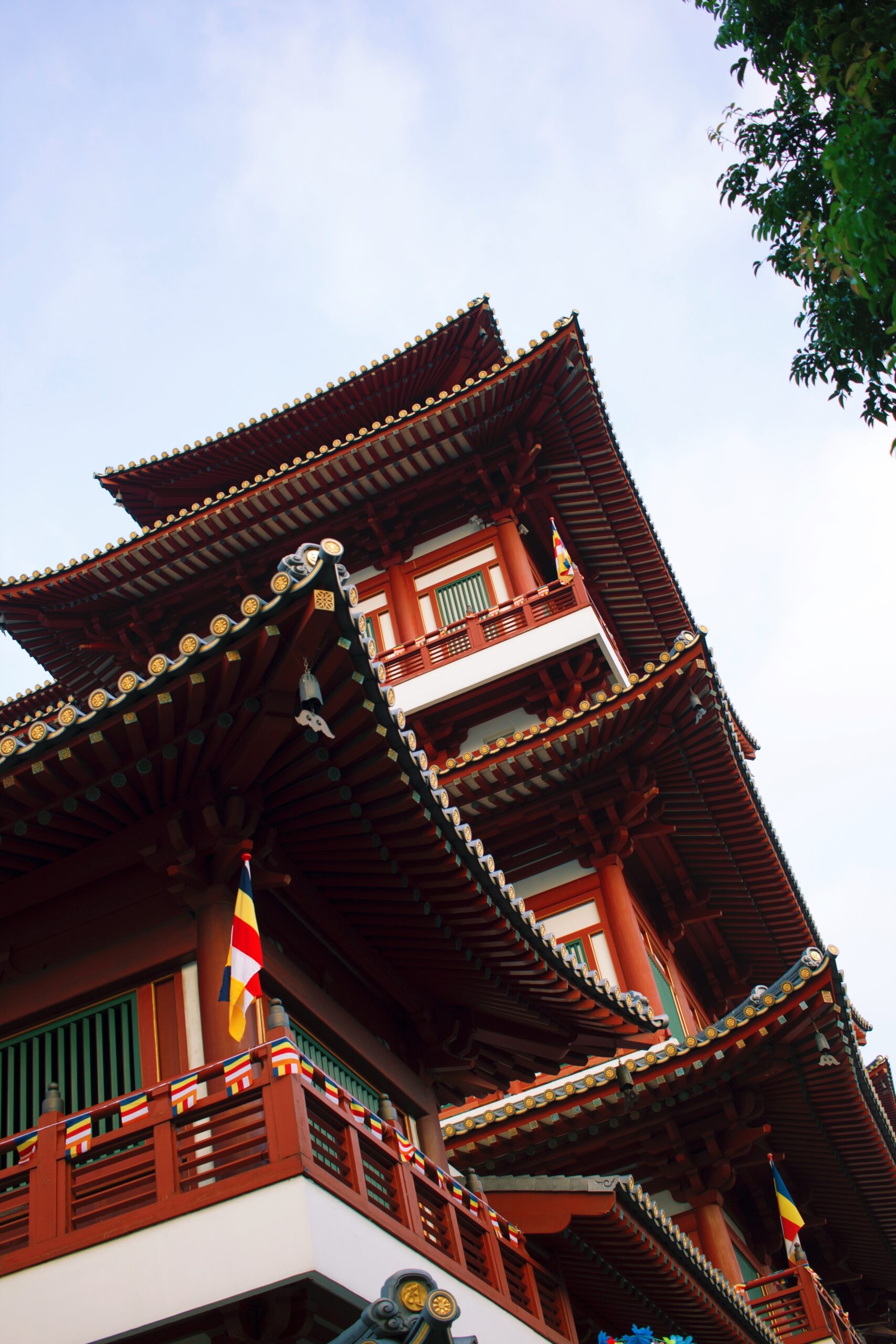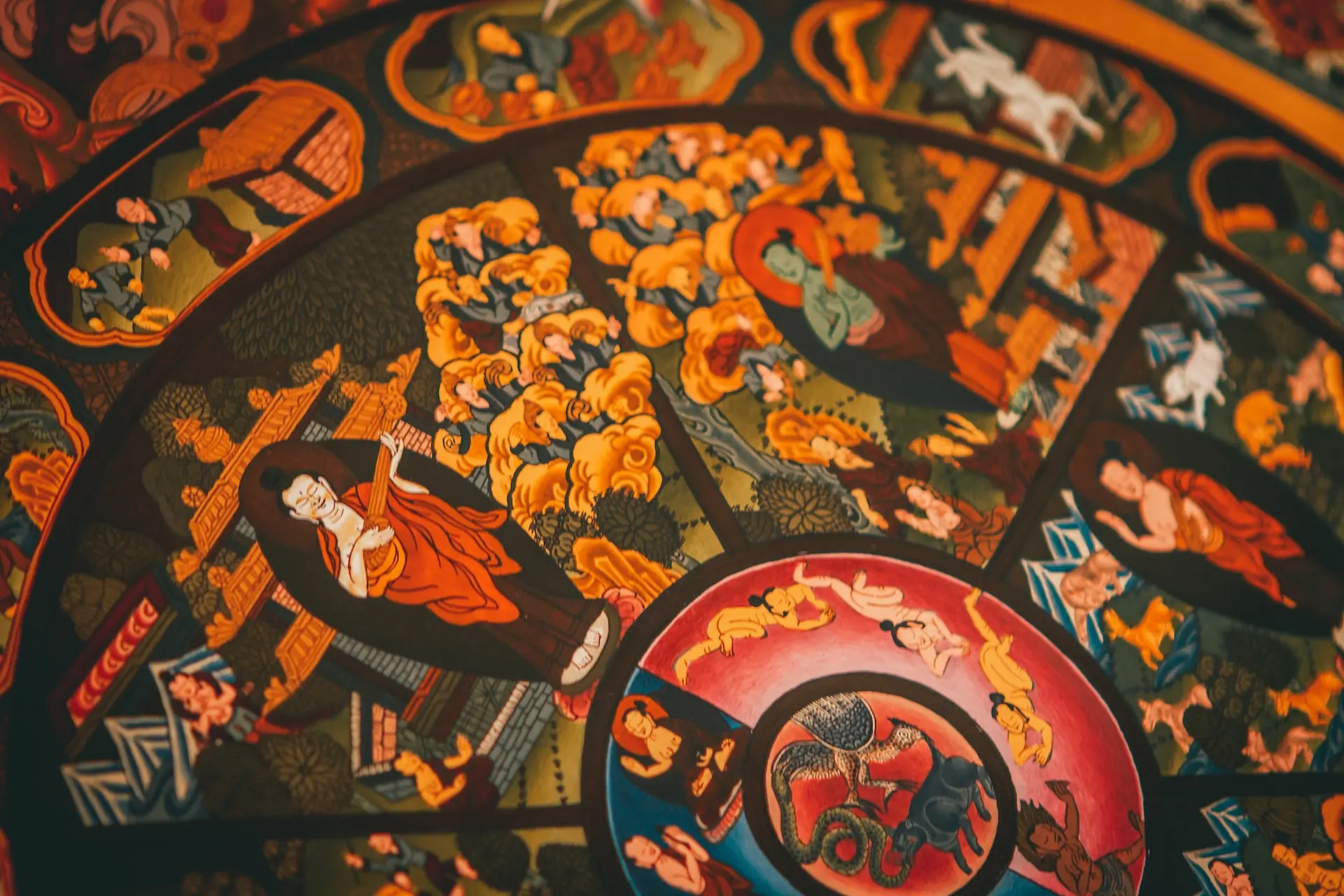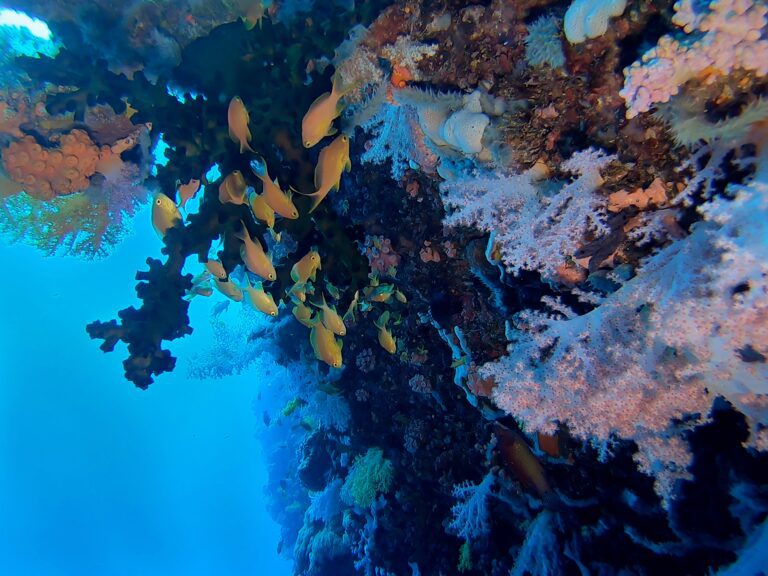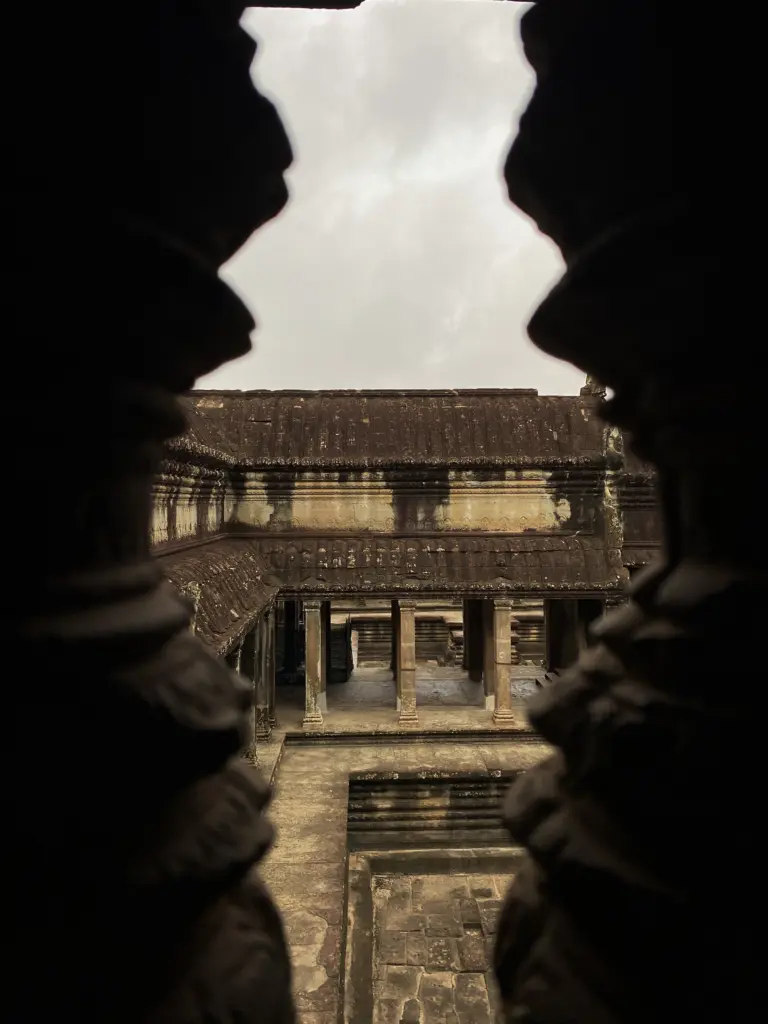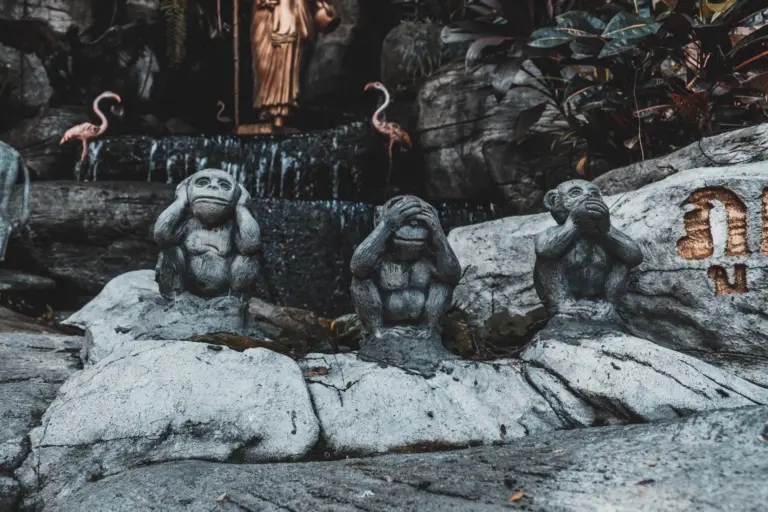Alexandria.
Known as the “Pearl of the Mediterranean.”
It’s rich cultural heritage and cosmopolitan allure promises an unforgettable journey through time.
From the fabled Library of Alexandria to the stunning coastline, this city offers an experience that’s quite a rare find in the country. I found it to be the most warm and welcoming city compared to Cairo and Luxor.
In Alexandria, you can unearth the secrets of its Greco-Roman past, bask in the charm of its bustling streets, and indulge in the radiant sunsets over the Mediterranean pretty much every day.
Table of Contents
Toggle
History of Alexandria
Alexandria, founded by Alexander the Great in 331 BC (thus the name), swiftly rose as a significant center of the Hellenistic civilization. It was renowned for the Lighthouse of Alexandria, one of the Seven Wonders of the Ancient World, and there’s also the Great Library of Alexandria.
In 30 BC, after the death of Cleopatra and Mark Antony, Alexandria fell under Roman rule, becoming a vital center of the Roman Empire.
The city continued to flourish during the Byzantine period but faced significant changes following the Arab conquest in 641 AD. Under Islamic rule, Alexandria remained an important economic and cultural center, though its prominence gradually diminished compared to Cairo.
In the 19th century, Alexandria experienced a resurgence. It became a cosmopolitan hub, known for its diverse community, during the reign of Muhammad Ali Pasha. This period is marked by architectural and cultural development, blending Egyptian, Greek, and Roman influences.
Today, Alexandria is a fusion of its rich history and modern Egyptian culture.
Best Places to Visit in Alexandria
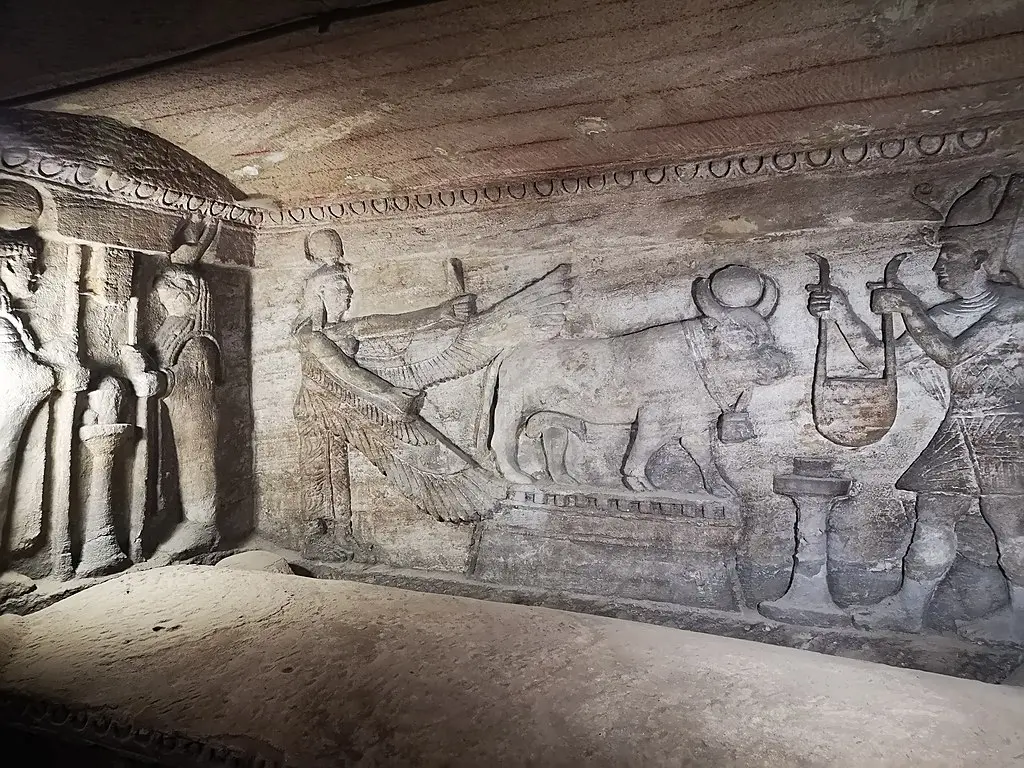
1. Catacombs of Kom El Shoqafa
The Catacombs of Kom el Shoqafa, dating back to the 2nd century AD, is an underground necropolis!
The site is known for its remarkable spiral staircase that descends into the darkness, revealing a series of chambers. At the heart of the catacombs is the Triclinium, a banquet hall where families of the deceased conducted ritual meals. Intricate carvings and sculptures adorn the walls, depicting a blend of classic and Egyptian mythologies.
The Hall of Caracalla, another notable section, allegedly contains the remains of Roman soldiers.
The catacombs were lost to time and only rediscovered in 1900 when a donkey accidentally fell into one of the access shafts, and the rest is history!
If you’re interested, you can join a tour that visits the catacombs and the many other archaeological sites around Alexandria through here.
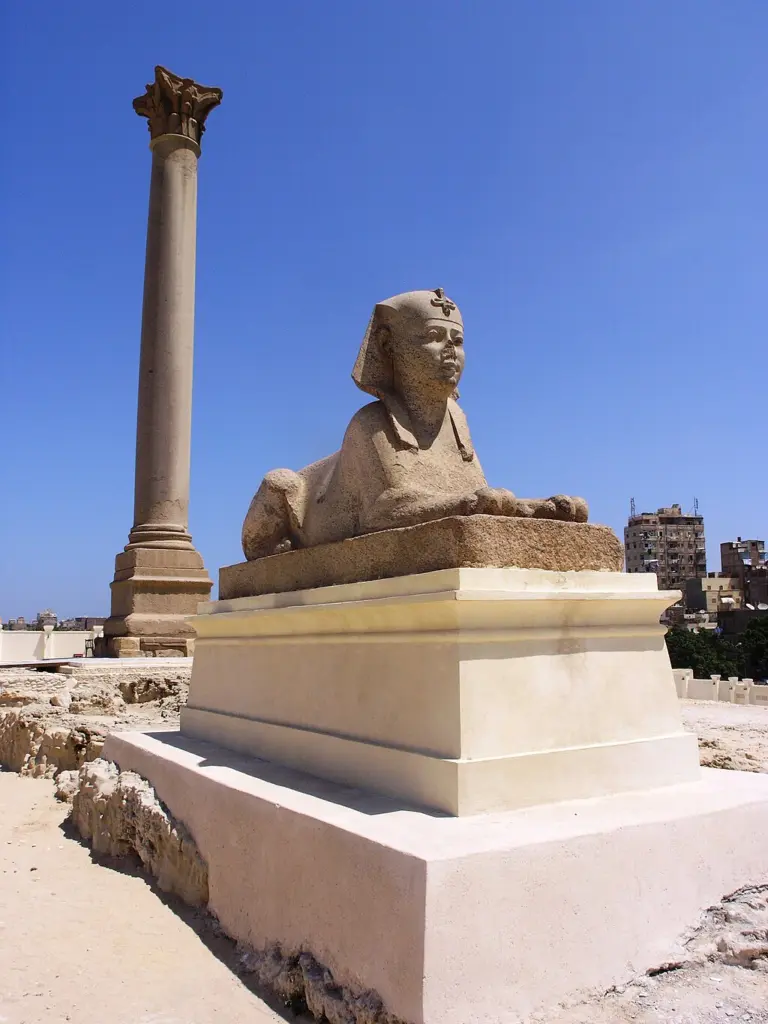
2. Pompey`s Pillar
Pompey’s Pillar is named after the Roman general Pompey. However, contrary to its name, the pillar was actually erected in 297 AD in honor of Emperor Diocletian, not Pompey.
Standing at an impressive height of about 28 m (92 ft), this column is made of red Aswan granite. It’s the largest of its kind outside of Rome and Constantinople. The Corinthian capital atop the pillar adds to its grandeur.
The site, Serapeum, where the pillar stands was once part of a larger temple complex, dedicated to the god Serapis. The temple was a syncretic religious site during both the Greek and Roman periods in Alexandria.
While much of the complex has been lost to time, the pillar still remains.

3. Kom el-Dikka
Kom el-Dikka, its name meaning “Mound of Rubble,” belies the historical treasures unearthed here, including well-preserved Roman villas, a small Roman theater, and the remains of a Ptolemaic temple.
The site’s highlight is no doubt the Roman amphitheater, discovered in the 1960s. This small yet well-preserved theater, with its marble seats and galleries, could accommodate around 800 spectators. It’s a rare example of Roman-style theaters in Egypt. Amman in Jordan is another place with a huge Roman Amphitheatre.
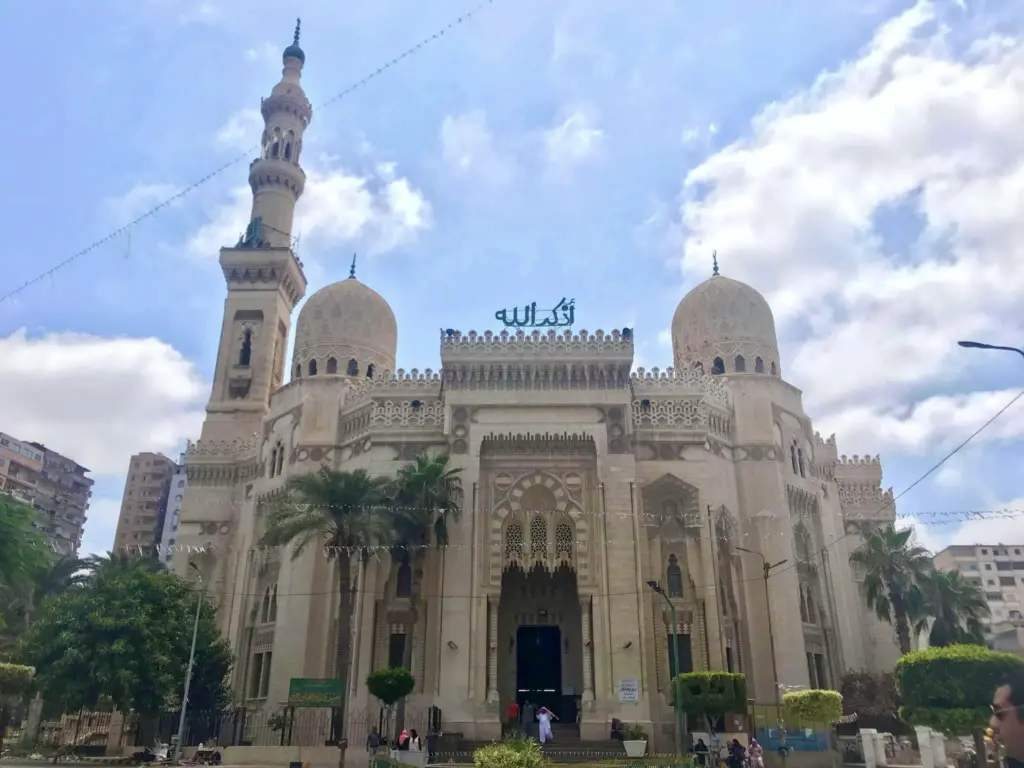
4. Abu Al-Abbas Al-Mursi Mosque
The Abu al-Abbas al-Mursi Mosque is one of the city’s most significant and revered Islamic landmarks. This mosque is dedicated to Abu al-Abbas al-Mursi, a revered 13th-century Sufi saint originally from Andalusia, Spain, who settled in Alexandria.
The mosque stands out with its high minarets and distinctive architectural style. It has undergone several renovations and expansions since its original construction in 1307. The current structure, with its grand facade and intricate decorations, mainly dates back to the 19th century.
A person I met through Couchsurfing took me here while we were driving around Alexandria. I was a bit hesitant but he also encouraged me to take a look inside. It was my first time in a mosque and I found it to be really peaceful. The men and women were separated by a barrier and we had to take our shoes off.

5. Citadel of Qaitbay
The Citadel of Qaitbay is a formidable fortress situated on the eastern edge of Alexandria.
Constructed in 1477 by Sultan Al-Ashraf Sayf al-Din Qaitbay, the citadel was initially built to defend against the Ottoman Empire’s potential advances. Over the centuries, it has served various roles, including a defensive fortress, a royal residence, and a military garrison. Today, it has been transformed into a maritime museum.
The design of the Citadel of Qaitbay is a classic example of Islamic military architecture, featuring robust walls, a strategic position overlooking the sea, and numerous defensive elements like watchtowers and a moat, now dry.

6. Alexandria National Museum
The Alexandria National Museum is housed in a beautifully restored Italianate mansion that once belonged to a wealthy wood merchant. The museum was inaugurated in 2003.
The museum’s collection spans from the Pharaonic era through the Greek and Roman periods, up to the Coptic and Islamic eras, effectively narrating the story of Alexandria and Egypt through various epochs.
Visiting the Alexandria National Museum provides a deeper understanding and appreciation of the city’s historical significance and its role as a cultural melting pot over the centuries. It’s an essential stop for anyone looking to grasp the full spectrum of Alexandria’s diverse heritage.
Hidden Gems in Alexandria
7. Ras el-Tin Palace
Ras el-Tin Palace is actually one of the official residences of the President of Egypt. Its name, which translates to “Cape of Figs,” reflects the area’s original landscape.
Built in 1834 during the reign of Muhammad Ali Pasha, the founder of modern Egypt, Ras el-Tin Palace is considered one of the oldest royal palaces in the country. It combines architectural styles from Ottoman, European, and Islamic influences, showcasing the cosmopolitan nature of Alexandria during the 19th century.
While the palace is not open to the public, the palace’s exterior and its surrounding area can still be admired.

8. El Gondy El Maghool Square
El Gondy El Maghool Square, dedicated to the unknown sailors who perished in sea battles. Notably the Battle of Navarino, a crucial naval engagement in the Greek War of Independence, involved a combined fleet of British, French, and Russian forces against the Ottoman and Egyptian navies.
The square originally featured a statue of Ismail Pasha (Khedive Ismail), a key figure in Egypt’s modern history. However, in 1952, this statue was replaced with the current monument as a tribute to the sailors.

9. Lighthouse of Alexandria
The Lighthouse of Alexandria, also known as the Pharos of Alexandria, was one of the Seven Wonders of the Ancient World and a marvel of ancient engineering. Although it no longer stands today, you can still visit the site of where it once stood and bask in its ancient aura.
Constructed in the 3rd century BC on the small island of Pharos, just off Alexandria’s coast, the lighthouse was commissioned by Ptolemy I Soter and completed during the reign of his son, Ptolemy II. It was designed by the Greek architect Sostratus of Cnidus and stood approximately 100-130 m (330-430 ft) tall, making it one of the tallest man-made structures of its time.
The lighthouse suffered damage from several earthquakes between the 10th and 14th centuries and eventually became an abandoned ruin. Today, the Citadel of Qaitbay stands on the site instead.
Top Things to Do in Alexandria

10. Visit the Bibliotheca AlexanDrina
The Bibliotheca Alexandrina is a modern library and cultural center, inaugurated in 2002. It stands as a reimagining of the ancient Library of Alexandria, once the largest and most significant library of the ancient world.
The Bibliotheca Alexandrina’s striking architecture, featuring a massive circular disk-like structure symbolizing the sun rising out of the Mediterranean Sea. The building, designed by the Norwegian architectural firm Snohetta, has won acclaim for its innovative design.
Inside, the library boasts a vast collection of books in various languages, with a main reading room that spans seven terraced levels. It also houses several museums, these include the Manuscript Museum, the Antiquities Museum, and the Science Museum.
At the end of our trip around Alexandria, my friend dropped me here where I holed up until sundown to escape from the heat. The air-conditioning and comfy cushions were a god-sent!
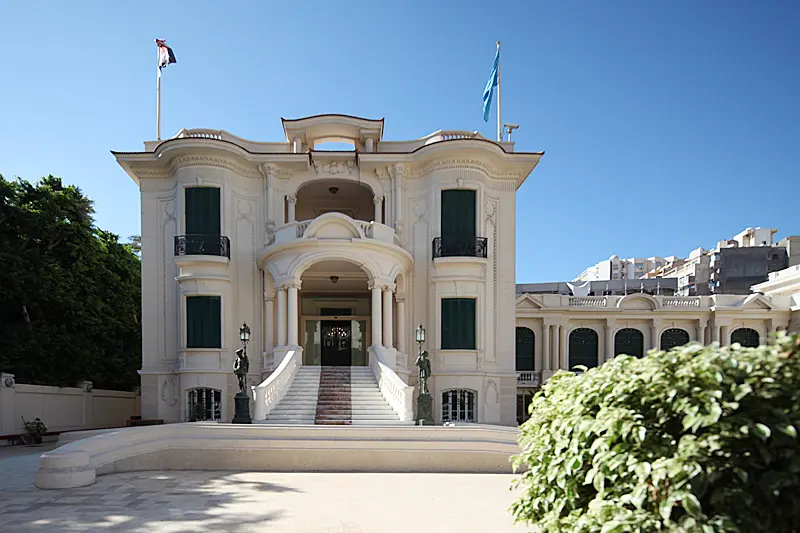
11. Marvel at the Royal Jewelry Museum
The Royal Jewelry Museum offers a glimpse into the opulent lifestyle of the Egyptian royal family before the revolution of 1952.
Housed in a former palace in the Zizenia neighborhood, this museum displays an exquisite collection of artifacts that belonged to the Muhammad Ali Dynasty, the last royal family of Egypt.
The building itself is an architectural masterpiece, showcasing a blend of European and Islamic styles. It was originally the villa of Princess Fatma Al-Zahra’.
Inside, the museum’s collection includes a dazzling array of items such as precious stones, jewelry, gold and silver ornaments, and decorative arts. Among the notable items are personal belongings of famous Egyptian royals like King Farouk, Queen Farida, and Princess Fawzia.

12. Relax at Antoniades Garden's
Make your way to Antoniades Gardens for a serene retreat from Alexandria’s cityscape. Named after Sir John Antoniadis, a wealthy Greek-Egyptian timber merchant and philanthropist, these gardens were originally part of his private estate before being opened to the public.
Designed in the 19th century, the gardens are a beautiful example of landscaping, combining elements of French and English garden design.
One of the main attractions within the gardens is the Antoniadis Villa, a stunning piece of architecture that once served as the residence of Sir John Antoniadis himself.
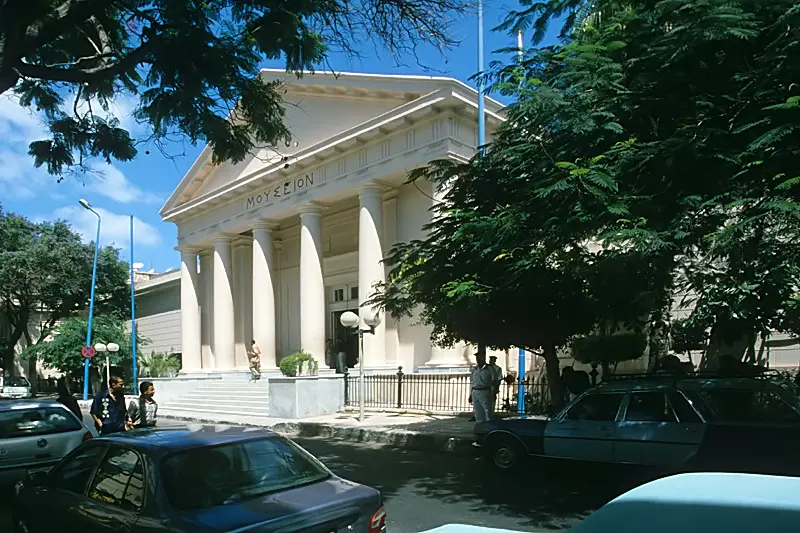
13. Learn from the Greco-Roman Museum
Established in 1892, the Greco-Roman Museum boasts an extensive collection of artifacts that illuminate the blend of Greek and Roman cultures with ancient Egyptian civilization.
The museum’s collection spans a wide range of artifacts, including sculptures, mosaics, coins, and pottery, which date from the 3rd century BC to the 7th century AD. These pieces provide insights into the daily life, religion, and art of the period when Alexandria was a hub of Hellenistic culture and a significant Roman province.
Don’t miss the museum’s collection of mummy portraits, which are exceptional examples of Greco-Roman art. These portraits were attached to mummies and provide a fascinating glimpse into the individual faces of people from the past.
14. Dive to Find Cleopatra's Palace
Diving to explore the submerged ruins of Cleopatra’s Palace is an extraordinary adventure! Located in the ancient city’s harbor area, these ruins are part of the sunken city of Thonis-Heracleion, believed to have been submerged due to earthquakes and rising sea levels over centuries.
The underwater site includes the remains of what is thought to be Cleopatra’s Palace, along with temples, statues, and other artifacts from the Ptolemaic period. You can witness the grandeur of ancient Alexandria, with colossal sphinxes, fragments of massive columns, and intricate stonework lying amidst the marine life.
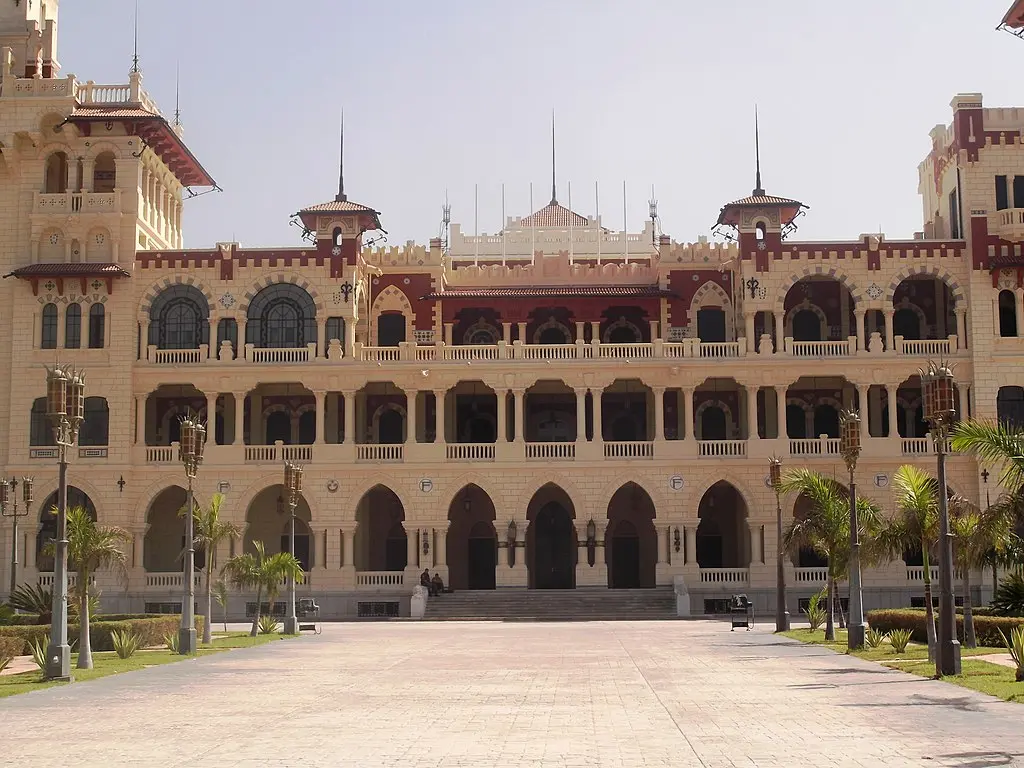
15. Admire the Montaza Palace
Montaza Palace, originally built in 1892 by Khedive Abbas II, the last Muhammad Ali Dynasty ruler of Egypt, served as a royal residence until the monarchy was abolished in 1952.
The palace’s architecture is a stunning mix of Ottoman and Florentine styles. The main building, known as the Salamlek, was used for hunting trips and as a royal summer residence. Next to it is the larger Al-Haramlik Palace.
The Montaza Royal Gardens surrounding the palace are equally impressive, covering over 150 acres. These beautifully landscaped gardens are filled with lush lawns, palm trees, and flowering plants, along with a series of small bridges and walkways leading to the Mediterranean Sea.
Funnily enough, according to the friend I was with at that time, the locals use the gardens as a sort of “rendevouz” for some good ol’ loving.
16. Shop at the Souk El-Attarine
The most famous souk in Alexandria is Souk El Attarine, located near the Attarine Mosque.
Souk El Attarine is a bustling marketplace, known for its array of shops. Here, you can find traditional Egyptian products such as spices, textiles, handicrafts, and jewelry.
The atmosphere in the souk is filled with the aromas of spices and the sounds of daily commerce. It’s a place where you can haggle with friendly vendors, sample local foods, and observe the daily life of Alexandrians. The narrow, winding alleys and the colorful displays add to the charm of the shopping experience.
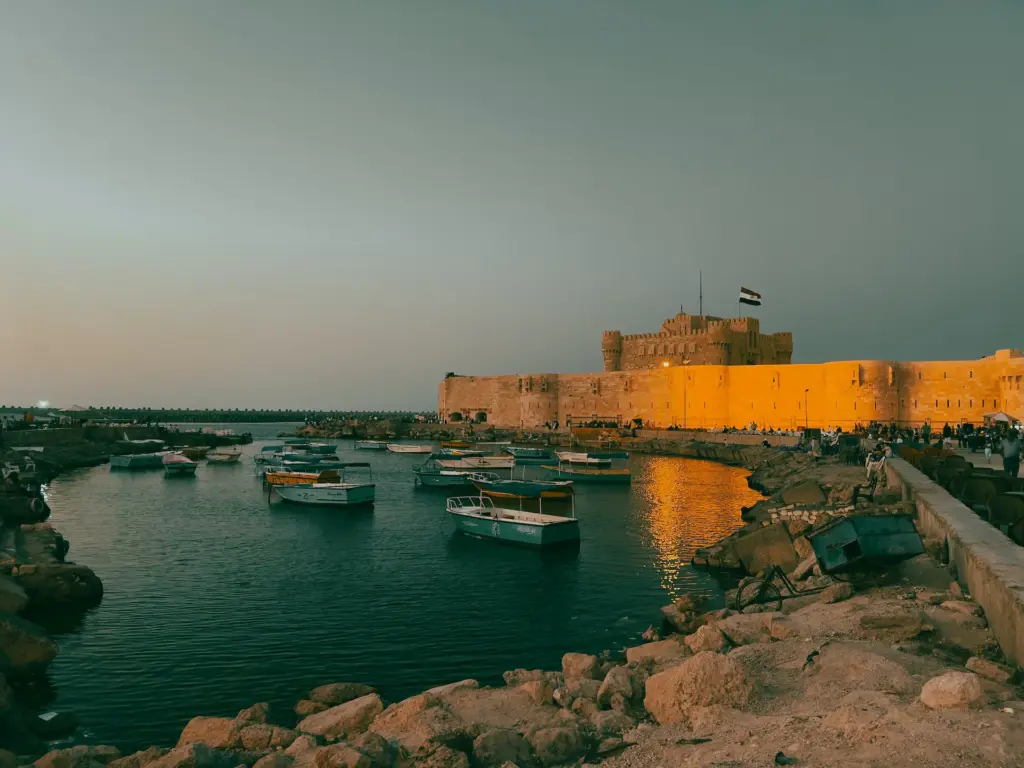
17. Catch the Sunset at the Corniche
Catching the sunset at Alexandria’s Corniche is one of the quintissential things to do while you’re in the the Mediterranean city.
The Corniche, a long waterfront promenade stretching for several kilometers, is a prime spot to unwind and soak in the beauty of Alexandria. You’ll find plenty of locals to gaze the sunset with.
I recommend Cleopatra Beach which is one of the spots where you can get really close and personal with the waves, in a good way. I’ve spent several sunsets here, and in the morning you’ll find plenty of fun activities to try out with the locals.
Where to Stay in Alexandria
Alexandria is a very pleasant place to soak in the Mediterranean vibes. I found it to be very laidback with much friendlier locals. I also felt very safe and was never once harassed by touts, nor were there any to be seen so it was such a welcome respite. Having perfect views of the sea, you won’t go wrong with any of the hotels in the area. Here’s what I recommend:
Best Hotels in Alexandria:
- Hilton Alexandria Corniche – offers a private beach, wellness facilities, and a panoramic pool terrace with sea views. Rooms are modern, with free Wi-Fi up to 4MB and flat-screen TVs. Suites include a living room. There’s also a gym, massages, and hot tubs for a fee. Children can play at the beachside playground during summer.
- Mirage Hotel – features an outdoor pool, concierge service, and a 24-hour front desk, along with airport transportation, room service, and complimentary WiFi. The air-conditioned rooms are equipped with a desk, coffee machine, minibar, safety deposit box, flat-screen TV, and a private bathroom with a shower.
- Four Seasons Hotel – offers a luxurious resort experience with a private sandy beach and views of the Mediterranean Sea. It boasts a full-service spa, an outdoor pool, and multiple dining options with terraces, all with free WiFi. The hotel features a two-story spa and fitness center with 14 treatment rooms, sauna, steam room, whirlpool, and a squash court.
Best Hostels in Alexandria:
- Ithaka Hostel – offers a communal atmosphere with a shared lounge, terrace, and city views. The hostel provides essential services like a 24-hour front desk, airport transportation, a shared kitchen, and complimentary WiFi throughout the property. The guest rooms at Ithaka Hostel, featuring shared bathrooms, are air-conditioned for comfort.
- Clement’s House Hostel – provides free WiFi and comfortable lodging. The hostel features shared kitchen and lounge facilities. Rooms are equipped with shared bathrooms, including a bidet.
- Triomphe Hostel – boasts rooms with both private and shared bathrooms, all with free Wi-Fi access. The rooms are furnished with wardrobes, a small sitting area, and TVs featuring Egyptian channels. Additionally, Triomphe Hotel provides a communal sitting area equipped with comfortable sofas and armchairs.
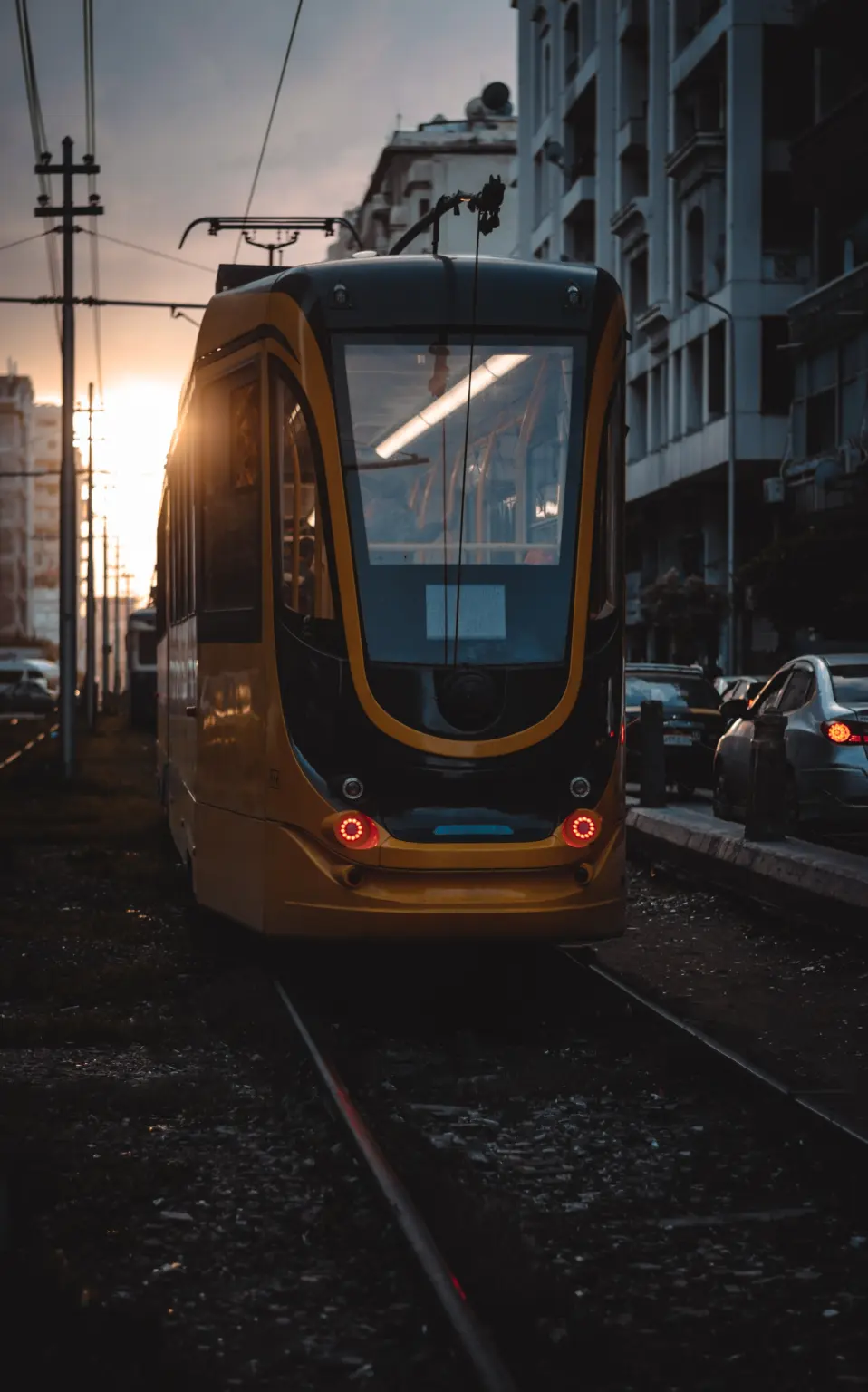
How to Get Around Alexandria
Getting around Alexandria is relatively straightforward, with various transportation options available. The city’s compact size and flat terrain make it really easy to navigate.
Trams: Alexandria has one of the oldest tram systems in the world. The tram network covers many parts of the city and is an excellent way to see Alexandria’s streets and neighborhoods.
Taxis: Taxis are readily available throughout the city. It’s advisable to agree on the fare before starting your journey, as most taxis don’t use meters.
Buses: The city has an extensive bus network that covers most areas at a very low cost. However, buses tend to be crowded and might be challenging to navigate for non-Arabic speakers. You can always ask the locals for help.
Walking: For shorter distances, especially along the Corniche or in the city center, walking is a pleasant way to explore. There’s also walking tours available if you’re keen on meeting new people while exploring.
Bicycles: Some areas along the Corniche are particularly enjoyable for cycling. My Couchsurfing host was part of a biking club and they would cycle around that area. Other areas though, I wouldn’t recommend, the traffic can be really dangerous.
How to Stay Safe in Alexandria
Be vigilant and informed, especially in areas popular with tourists, where petty crimes like pickpocketing can occur. Keep personal belongings secure and maintain awareness of your surroundings, especially in the crowded markets.
For me, the most dangerous part of navigating Alexandria is definitely the traffic. It can be challenging and even scary. The cars don’t really give way to pedestrians so you’ll have to do what the locals do and just run for it, preferrably at the same time with the locals. Traffic enforcement is almost null and traffic lights are somehow optional. Steel yourself!
Lastly, having comprehensive travel insurance that covers medical emergencies, theft, and trip cancellations is always a wise decision when traveling abroad.

Best Time to Visit Alexandria
The best time to visit Alexandria is during the spring, from March to May, and in the autumn, from September to November. These periods offer the most comfortable weather for exploring the city, with temperatures ranging from about 17°C to 28°C (63°F to 82°F).
The moderate climate during these months is ideal for sightseeing and outdoor activities, and you’ll encounter fewer tourists compared to the peak summer season. Though summer in Alexandria isn’t that hot compared to other Egyptian cities, speaking from first hand experience. Most likely due to the sea.

How to Get to Alexandria
Getting to Alexandria is straightforward, as the city is well-connected by various means of transportation. Here’s how you can get there:
By Air: The nearest airport is Borg El Arab Airport. It serves domestic and international flights.
By Train: Alexandria is well-connected to other major Egyptian cities like Cairo and Luxor by train. The train journey from Cairo to Alexandria is popular, efficient, and offers scenic views. Trains arrive at Misr Station, the main railway station in Alexandria.
By Bus: Traveling by bus is another option. Several bus companies operate regular services to Alexandria from cities across Egypt. The roads are generally in good condition, and the journey offers a chance to see more of the country or the desert. I recommend using GoBus, it’s what I used to go from Cairo to Alexandria and I can say it’s a really good company with good buses!
Plan Your Trip to Alexandria | Best Travel Resources
Book Your Accommodations
- Booking.com – the world’s leading online booking platform for accomodations around the world, they have an extensive amount of available listings with zero booking fees and best price guarantees.
- Hostelworld – a backpacker’s best friend, Hostelworld has the largest collection of hostels and guesthouses for affordable prices.
Don’t Forget Insurance
- SafetyWing – from Nomad Insurance, an insurance by nomads for nomads. They understand our lifestyle well and have really comprehensive and flexible plans that cater to any traveler.
Find Cheap Flights
- Kiwi.com – my go-to for booking and finding the cheapest flights and it’s helped me save tons of money. They do virtual interlining which is connecting flights from airlines that do not codeshare, so you can find routes that you wouldn’t be able to find normally.
Join Tours & Activities
- GetYourGuide – is one of the best places to find unique tours and activities. I found that it’s an excellent way to meet fellow travelers and create fond memories. They are not only limited to tours as they also offer niche services such as skip-the-line tickets or private transfers.
Catch a Ride
- Rentalcars.com – nothing beats the freedom of the road, Rentalcars.com is the world’s largest online car rental service. They operate across 160 countries so they’re the perfect partner to work with if you find yourself wanting a ride.


